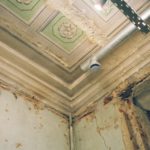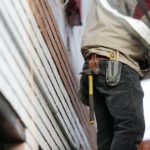The best way to protect your rental property is to stay on top of routine maintenance and repairs with yearly rental inspections. Just like with your car – routine maintenance and inspections can head off any future problems and expensive repairs. Regardless of whether you have a new tenant or someone trustworthy who’s been in your rental for many years, you’ll need to coordinate with them to maintain a schedule for annual rental inspections and maintenance of the residence.
Why Yearly Rental Inspections and Preventative Maintenance is Important
Yearly inspections and regular maintenance ensure the safety of the property so that long-term wear and tear doesn’t result in hazardous living conditions. Performing these inspections is a great way to make certain that your tenant is properly caring for and keeping up your rental per the terms of their lease.
Additional benefits of annual rental inspections include:
- Maintaining open communication with your tenant so they know you are available and responsive
- Keeping an eye out for lease violations (unauthorized additional tenants, pets, smoking, etc.)
- Checking for any criminal activity that might happen on your property
Scheduling the Annual Rental Inspection with your Tenant
In scheduling a yearly rental inspection or any regular maintenance, give your tenant sufficient notice so it doesn’t inconvenience them. The tenant may want to be present to observe the inspection and answer any questions. While laws regarding entry to a rental unit vary by state, entering without providing notice is only acceptable in cases of emergency, or if you suspect that the property has been abandoned. So how much notice for access to the property is required?
California landlord-tenant laws use the term “reasonable notice” however, the definition of what is reasonable is left somewhat to the discretion of the parties involved. In Texas, landlord-tenant law doesn’t address the specific timing of notice for entry to a rental property, so the rules typically default to the terms of the lease agreement.
Since the rules differ from state to state, it’s important to verify local landlord-tenant laws before planning a yearly inspection. More information about state laws regarding a landlord’s rental property access can be found here.
Remember, tenants have a right to privacy. If they find you in their home without permission, they may call the police for trespassing or sue you for invasion of privacy and harassment. Save yourself any hassles by working with your renter.
Annual Rental Inspection Checklist
There are many things to cover during the inspection. Having a checklist is crucial to assuring that nothing is overlooked. The checklist will differ from property to property, but here are some important items to include:
- Look for unusual damage (broken windows or door locks, damaged appliances or countertops, stained carpeting, etc.)
- Check for signs of unusual moisture and mold
- Determine if there are any indoor or outdoor plumbing leaks
- Check the working condition of any appliances that you’ve provided with the property
- Look for excessive trash that could lead to insect or rodent infestations
- Check the working condition of smoke alarms and carbon monoxide detectors
- Check and replace indoor air filters if necessary
- Inspect all kitchen and bathroom caulking
- Inspect carpeting and hardwood floors
- Check to see if the fire extinguisher is in working order
- Tighten loose doorknobs, fixtures, and drawer handles
- Flush kitchen and bathroom drains
Seasonal Maintenance and Inspections
If your rental property is in Seattle where it rains a lot, or North Dakota with heavy snowfall, consider Biannual inspections to prepare for drastic seasonal weather changes. The following is a list of important items to include in your rental property inspection based on the season.
Spring and Summer Yearly Rental Inspection and Maintenance
- Gutters– Spring is a good time to have rain gutters cleared and to make sure that they are undamaged and properly secured
- Roof Inspection– Check for leaks and roof damage from birds or animals. Make sure there are no missing roofing tiles or problem nails.
- Attic Inspection– Tenants and landlords alike often ignore attics in houses. However, inspecting the attic regularly will help you detect early signs of roof leaks and mold. You can also check for signs of rodent intrusion and repair any consequent wall or insulation damage.
- Clear Exterior Vents– If you live in a state with excessive snow, check the exterior vents (including dryer and bathroom vents) for rust and to make sure there isn’t any debris build-up or blockage.
- Inspect Window and Door Screens– A screen should last a minimum of 10 years, but it can incur damage from harsh winter storms. Check for holes and frame damage and replace screens if necessary.
- Inspect the HVAC System– Have a service technician inspect the HVAC system to provide regular maintenance that includes changing belts, checking coils, and replacing filters.
- Thermostat– Test the thermostat to verify that the temperature readings are accurate. This will help to keep your rental property energy efficient all year round.
- Exterior Paint– Most homes should be repainted every 7 to 10 years depending on the weather where the property is located. Spring and summer are good times to schedule any exterior painting work.
- Exterior Pathways and the Porch– When temperatures fluctuate, housing structures and the ground they sit on can expand and retract. This can lead to hairline cracks in walkways and exterior construction. While completing your spring and summer maintenance check, be sure to check for uneven surfaces and cracks that could be hazardous for pedestrians. Now is also a good time to check and repair any damage to the property’s porch or deck.
Winter and Fall Yearly Rental Inspection and Maintenance
- Service the Furnace– Furnaces should be inspected and serviced regularly to keep your tenants warm in the winter. A furnace check-up should include testing and adjusting the gas pressure and the exhaust system. Furnace electrical connections and voltage should be inspected. Finally, the fan belt should be checked for wear and replaced, if necessary.
- Inspect the Water Heater and Pipes– Before cold weather rolls in, it’s a great idea to have the water heater inspected. Annual maintenance should include flushing the unit to reduce sediment buildup. This is also a great time to educate your tenants on tips to prevent the pipes from freezing during a cold snap.
- Clean the Chimney– Is your property equipped with a fireplace? Soot can build up inside the chimney whenever someone lights a fire. You should hire a chimney cleaning service every fall to make sure that the chimney is clear. Doing so will reduce the chance of an unexpected house fire and keep your tenant safe.
- Inspect Outdoor Spigots and Hose Hookups– Outdoor hoses can crack and open spigots can cause pipes to freeze whenever winter temperatures plummet. If your rental property is in an area that has heavy snowfall and long periods of freezing temperatures, it’s vital to drain and disconnect outside hoses and hookups. If necessary – turn off the exterior water valve at the beginning of the cold season.
- Prune Shrubbery and Cut Back Trees– Fall is an excellent time for yard maintenance. Inspect all trees and shrubbery that are close to the house. Hire a team to complete all necessary pruning and be sure to cut back branches that could cause roof tile damage or power line problems.
Finishing an Annual or Bi-Annual Inspection
When you have completed your rental inspection or seasonal maintenance, sit down with your tenant to review the results. Discuss all maintenance and repairs that still need to be scheduled so you can find a time that’s convenient for both of you. Finally, be sure to explain who is financially responsible for each item on the list per the terms of the lease. It’s important to be clear when discussing maintenance costs, no one likes surprises when it comes to unexpected expenses.
In addition to performing yearly rental inspections for your property, it’s a good idea to do an occasional drive-by inspection. By doing so, you can check to see if the property’s curb appeal is being adequately maintained by the tenant. You can also check to see if the number of cars regularly parked at the unit is more than what was listed on the lease. If so, it may be an indicator the tenant may have violated the lease by subletting a bedroom or adding extended family members without your approval.
If you have any concerns, keep in mind communication is key to maintaining a positive working relationship with your tenants.










